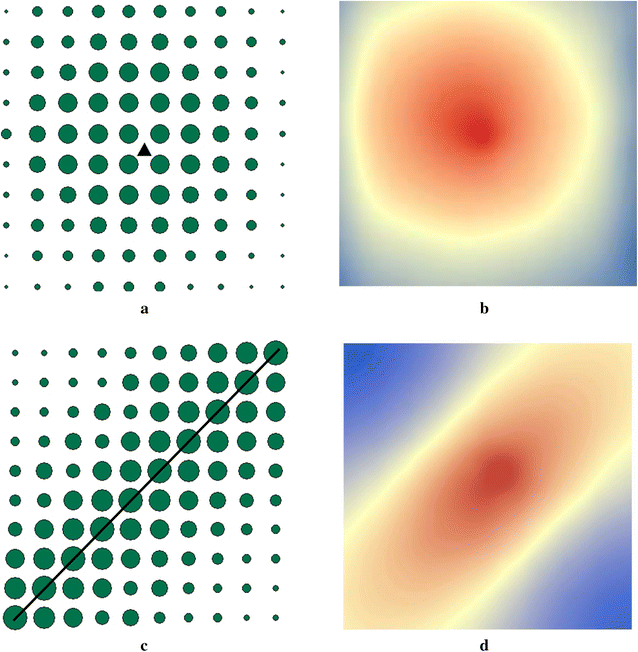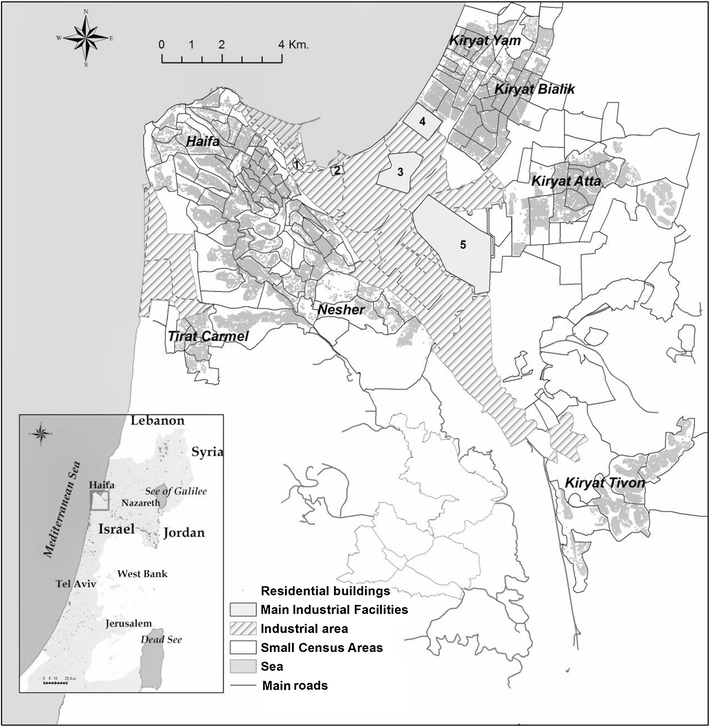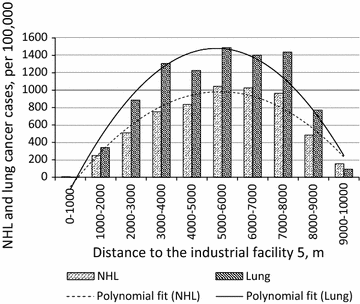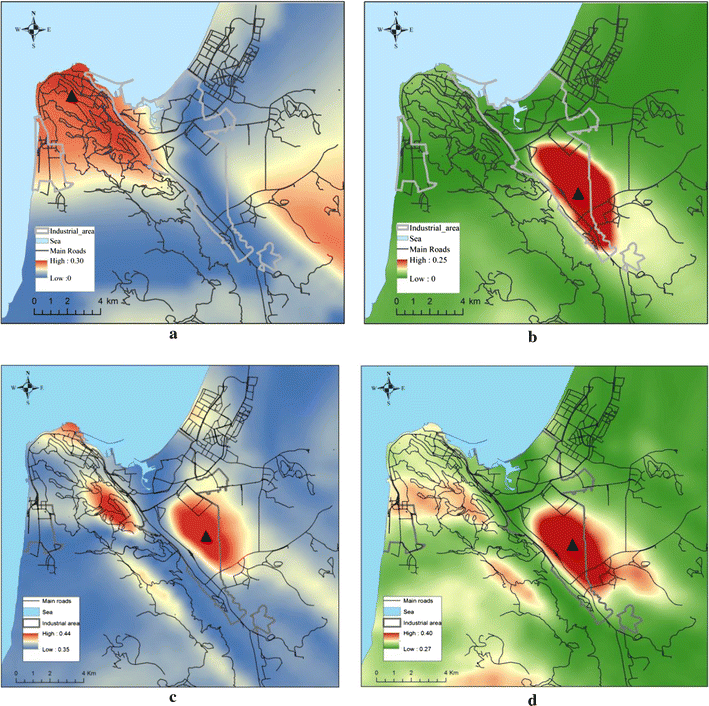Spatial identification of potential health hazards: a systematic areal search approach
- PMID: 28173815
- PMCID: PMC5297159
- DOI: 10.1186/s12942-017-0078-8
Spatial identification of potential health hazards: a systematic areal search approach
Abstract
Background and aims: Large metropolitan areas often exhibit multiple morbidity hotspots. However, the identification of specific health hazards, associated with the observed morbidity patterns, is not always straightforward. In this study, we suggest an empirical approach to the identification of specific health hazards, which have the highest probability of association with the observed morbidity patterns.
Methods: The morbidity effect of a particular health hazard is expected to weaken with distance. To account for this effect, we estimate distance decay gradients for alternative locations and then rank these locations based on the strength of association between the observed morbidity and wind-direction weighted proximities to these locations. To validate this approach, we use both theoretical examples and a case study of the Greater Haifa Metropolitan Area (GHMA) in Israel, which is characterized by multiple health hazards.
Results: In our theoretical examples, the proposed approach helped to identify correctly the predefined locations of health hazards, while in the real-world case study, the main health hazard was identified as a spot in the industrial zone, which hosts several petrochemical facilities.
Conclusion: The proposed approach does not require extensive input information and can be used as a preliminary risk assessment tool in a wide range of environmental settings, helping to identify potential environmental risk factors behind the observed population morbidity patterns.
Keywords: Disease hotspots; Multivariate regression analysis; Receptor-oriented models; Source-oriented models; Systematic search approach; Wind adjustment.
Figures




Similar articles
-
Spatial identification of environmental health hazards potentially associated with adverse birth outcomes.Environ Sci Pollut Res Int. 2019 Feb;26(4):3578-3592. doi: 10.1007/s11356-018-3800-6. Epub 2018 Dec 6. Environ Sci Pollut Res Int. 2019. PMID: 30519916
-
A new approach to spatial identification of potential health hazards associated with childhood asthma.Sci Total Environ. 2017 Oct 1;595:413-424. doi: 10.1016/j.scitotenv.2017.03.222. Epub 2017 Apr 7. Sci Total Environ. 2017. PMID: 28391146
-
Application of the double kernel density approach to the analysis of cancer incidence in a major metropolitan area.Environ Res. 2016 Oct;150:269-281. doi: 10.1016/j.envres.2016.06.010. Epub 2016 Jun 20. Environ Res. 2016. PMID: 27336231
-
[Health risk assessment of traffic-related air pollution near busy roads].Rev Epidemiol Sante Publique. 2012 Aug;60(4):321-30. doi: 10.1016/j.respe.2012.02.007. Epub 2012 Jul 4. Rev Epidemiol Sante Publique. 2012. PMID: 22770751 Review. French.
-
[Particulate matter (PM10) air pollution, daily mortality, and hospital admissions: recent findings].Ig Sanita Pubbl. 2006 May-Jun;62(3):289-304. Ig Sanita Pubbl. 2006. PMID: 17206202 Review. Italian.
Cited by
-
Spatial identification of environmental health hazards potentially associated with adverse birth outcomes.Environ Sci Pollut Res Int. 2019 Feb;26(4):3578-3592. doi: 10.1007/s11356-018-3800-6. Epub 2018 Dec 6. Environ Sci Pollut Res Int. 2019. PMID: 30519916
References
-
- Burkitt DP. Geography of a disease: purpose and possibilities from geographical medicine. In: Rothschild HR, editor. Biocultural aspects of disease. New York, NY: Academic Press; 1981. pp. 133–51.
-
- Chen X, Ye J. When the wind blows: spatial spillover effects of urban air pollution. Environment for Development Discussion: Paper Series 2015; EFD DP 15-15.
Publication types
MeSH terms
Substances
LinkOut - more resources
Full Text Sources
Other Literature Sources
Medical

